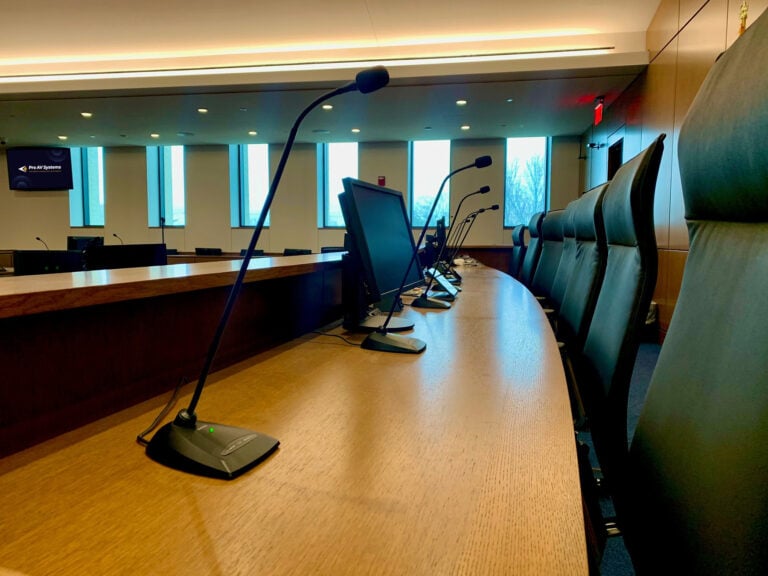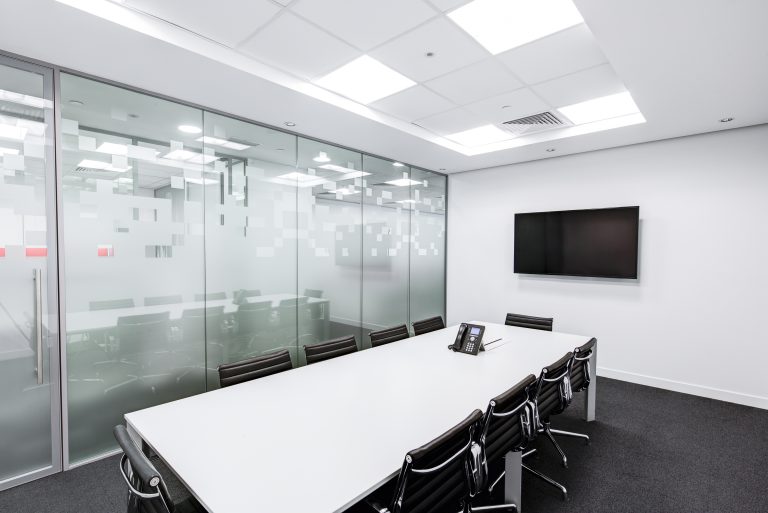Whether a courthouse, city hall or other governmental facility, there are often special requirements that these buildings require to provide the services and the ability to perform tasks that take place within their walls. Public forums, assistive technology for the hearing impaired and facilities for training are just a few of the considerations that often have to be addressed.
Access to Public Meetings
There are many reasons why constituents can’t attend public meetings—whether distance, lack of transportation, or busy lifestyles. No matter what the reason, the onus to be transparent falls on government officials and providing a way to view meetings from the comfort of a constituents’ living room goes a long way toward achieving that goal. Ensuring that users can easily utilize camera and audio equipment is just as important. PTZ cameras with automatic presets can take the guesswork out of any meeting with the ability to track and zoom in on whomever may be speaking. Microphones that capture and deliver quality sound so that viewers don’t miss a beat take precedence in rooms where public meetings are held. This goes for in person attendees as well—providing clear audio and video so everyone can clearly discern what is being said is important no matter where the viewer is located.
Multipurpose Rooms
Budget is typically a prime concern in government and enabling rooms to be utilized for multiple purposes results in a more efficient use of space and AV resources. Providing spaces that can be used for collaboration, a public speaking forum or training room by easily switching between equipment offers the flexibility required of government buildings.
Assistive Listening
By law, government agencies must ensure that communications with individuals with disabilities are as effective as communications with others. For the hearing impaired, assistive listening technologies provide the means for them to be able to clearly understand what is being said. There are several options for Assistive Listening Systems (ALS) such as an Induction Loop, which can transmit audio directly to a listeners’ hearing aid, cochlear implant or loop receiver (hand-held or worn around the neck). Infrared, Radio Frequency and Wireless systems are also viable solutions.
Digital Signage
Alerting citizens to meetings, events, and other government related activities and news is a vital function of government. Digital signage is an effective and engaging tool for public communications that can be easily modified and updated to provide the most current information. It can be installed nearly anywhere, indoors or out, with varying levels of brightness to account for ambient lighting, ensuring that passersby won’t have any issues reading them.




